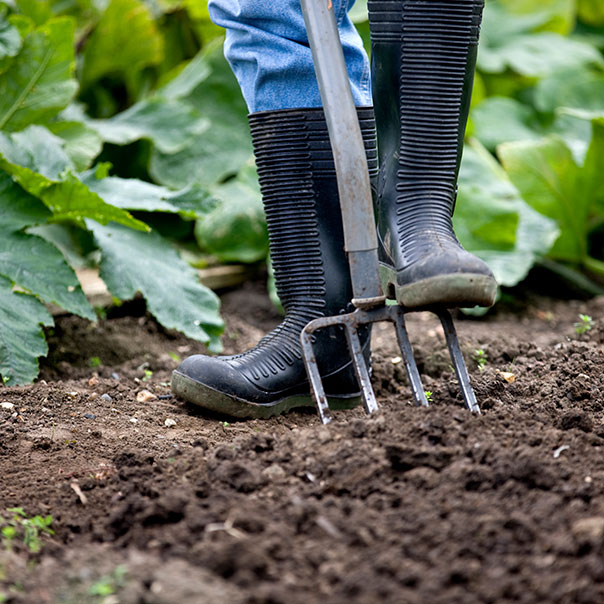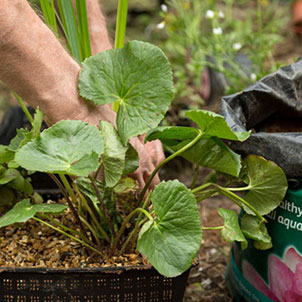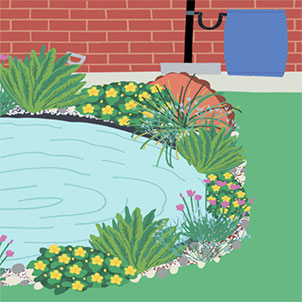How to create a bog garden for wildlife
A bog garden is a fantastic and low-maintenance alternative to a pond. And if you’ve got a pesky part of your garden that always seems to collect water, this is a fantastic way to use that space – creating something more attractive that provides wildlife habitat.
What is a bog garden?
Unlike a pond, which is a pool of standing water, a bog garden is in fact a patch of slow-draining, waterlogged soil that mimics natural bog conditions.
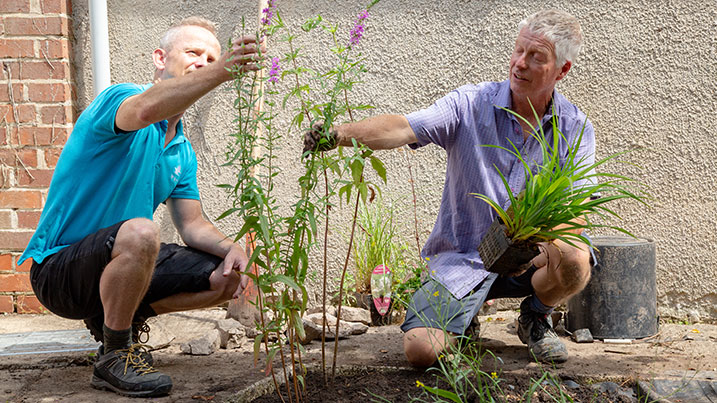
Why do we need bog gardens?
Bog gardens create stepping stones in your garden, linking dry areas with wet areas. They’re what’s known as ‘transitional’ habitats. And this is what makes them so valuable for nature. Within a small area, they offer a range of moisture conditions, and the rich diversity of plants that grow there can provide resources to a huge variety of wildlife.
Which plants can I grow?
If you grow a bog garden you’re in for a real treat, because the moisture loving plants of the bog are colourful and dramatic.Many grow big and tall and can make a real statement in your garden. Create contrasts with a variety of uprights, foliage, bold broad leaved plants and filigree ferns. Have fun with the following species:
- Yellow iris – great for perches and to give summer colour
- Purple loosestrife and meadowsweet - good to create height
- Creeping jenny – great ground cover
- Marsh marigold – good early blooms in spring
- Hemp agrimony – fantastic autumn colour
- Willow and dogwood – their colourful stems create winter interest
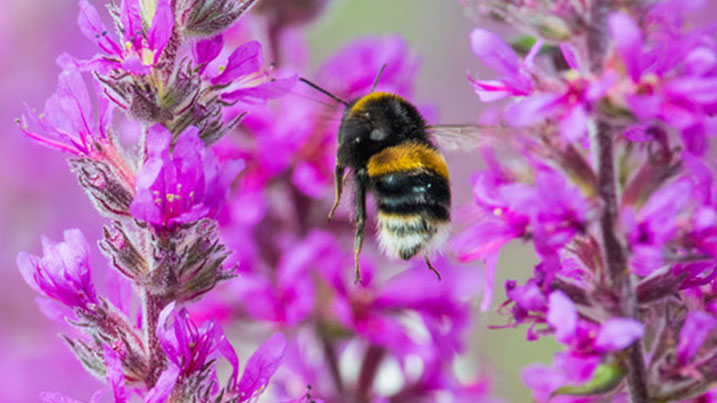
If you have areas of standing water in your bog garden, or sections where the ground is flooded for long periods of time, introduce pond marginals in place of bog plants.
Create a bog garden
Our short how-to video shows you how to make the most of damp patches of ground in your garden.
When?
Early spring to late summer is the best time to create a bog garden as the roots have time to get established, in the autumn when food starts to become scarcer they have more chance of being eaten. However, if you put one in autumn, this will create habitat and shelter for animals over the winter.
Where?
Your bog garden can be created as an addition to a pond but will work equally well as a standalone feature in low lying areas, for example a badly drained corner.
You can even make one in a container – line half a barrel with punctured plastic (you could use old ripped plastic that’s no use for anything else) and you’re good to go. Or why not fill in an old or leaky pond?
Which soil?
Clay soils that are naturally damp are ideal, but if you only have free draining soils, these will work too, as long as you use a liner and introduce top soil.
How?
- Outline the area where you want your bog garden to go using rope or hose.Make sure you’ve chosen a location away from overhanging trees as you need as much sun as possible.
- Dig a shallow hole 45-50cm deep. Any deeper and you’re getting towards a very a big hole… 45-50cm is enough for most people to dig in the garden and will accommodate the roots of most damp loving perennials (except perhaps Gunnera!) Once lined, pierce with a fork for drainage if using undamaged liner.
- Add a 3 cm layer of grit or gravel.This will help prevent the soil from blocking the drainage holes.
- Put the soil back in the hole, trim back the liner and mix in just a small amount of old compost. You don’t want too many nutrients as this will make the fast growing plants of your bog garden hard to control.
- Plant up your garden and keep watering them until established, if they are drying out (if not, just leave them be). Leave the area to get naturally waterlogged over winter.
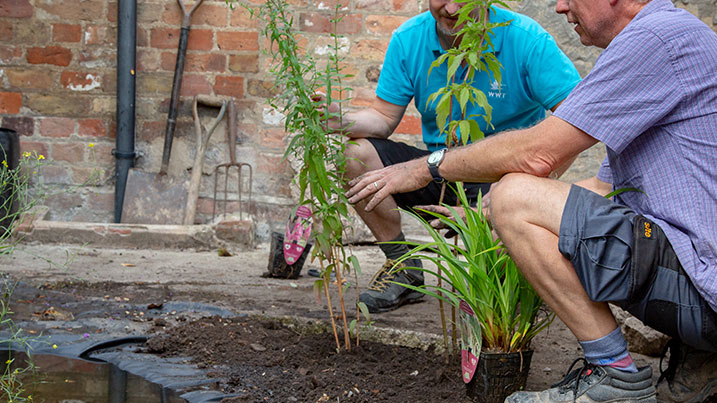
Bog garden quick tips
- Plant a combination of tall and short plants.
- Choose a variety of flowering and structural plants to ensure you have colour and interest throughout the seasons.
- Avoid plants that are too aggressive if you don’t have the space – pendulous sedge can get too bolshy and gunnera can grow very big.
- To prevent your bog plants taking over, keep on top of maintenance annually.
- Keep it moist in drought, using rainwater from a water butt if you can.
- Give your bog plants as much space as possible. They have big roots and need lots of water.
